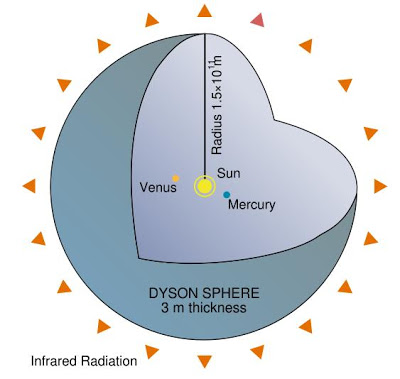Fermi paradox, metamaterials, dark matter, recent science and advanced aliens fading into the background
Traditional view of a Dyson’s sphere. Metamaterials could mask and alter the observable signature and alter the interaction with magnetism and the spectrum of space. The theory of dark matter is that 85-90% of the mass in the universe is dark and does not interact with the electromagnetic force. Recently there has been the design …




